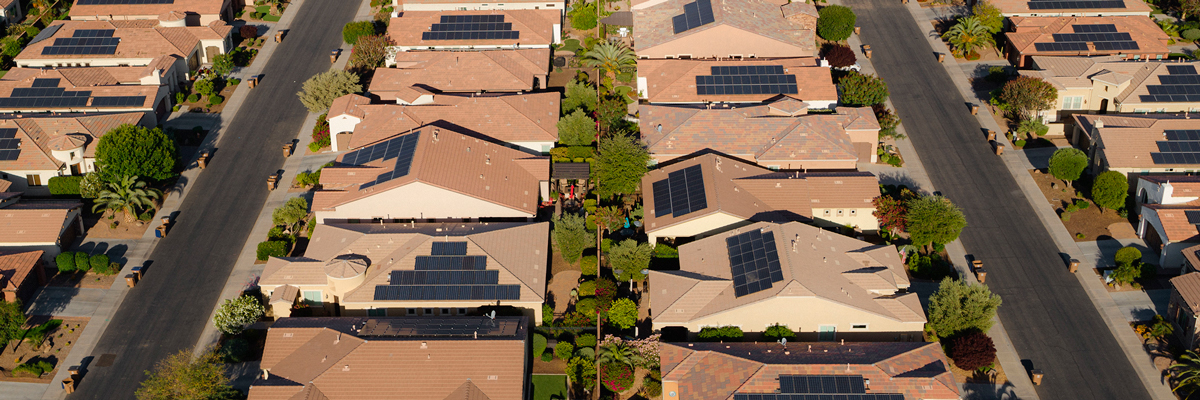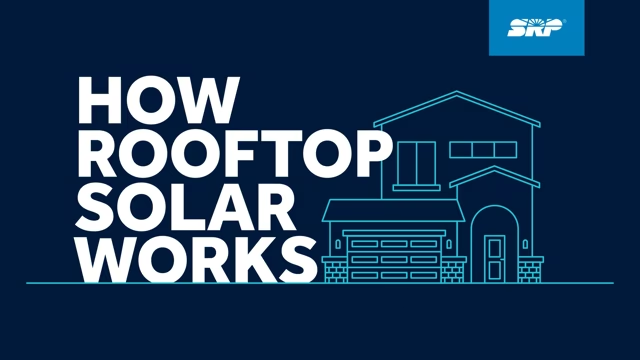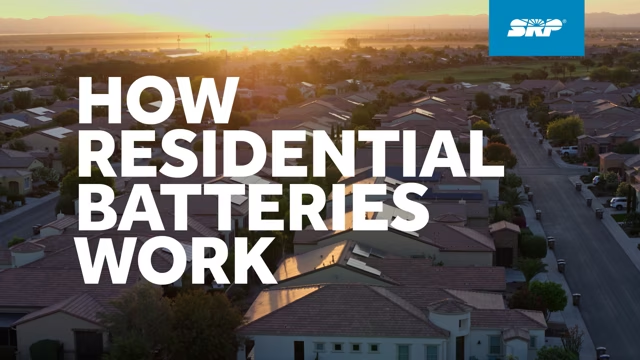
Solar energy and battery storage
Watch the videos below to see how solar power and battery storage work and why they’re important.

How rooftop solar works

How residential batteries work
How rooftop solar works
Rooftop solar allows you to generate renewable energy at home. Click on the house below to see how each component works.
Panels capture the sun’s energy
Your panels have photovoltaic cells that harness solar radiation and transform sunlight into electrical energy. Certain things can reduce how much sunlight is actually captured, such as cloudy conditions or shade from trees.

Batteries store unused energy
If your system has them, batteries allow you to store unused energy so you can use it after the sun goes down, which is ideal for time-of-use (TOU), customer generation and average demand plans. Battery storage also helps manage on-site demand through peak shaving.
Power may go back to the grid or vice versa
In some instances when you generate more energy than you need, your system can deliver that extra energy to SRP’s electric grid. However, if you need more energy than what your panels have generated, your house will pull power from SRP’s grid and you’ll be charged for that energy.
Power may go back to the grid or vice versa
In some instances when you generate more energy than you need, your system can deliver that extra energy to SRP’s electric grid. However, if you need more energy than what your panels have generated, your house will pull power from SRP’s grid and you’ll be charged for that energy.
How battery storage works
Remember, solar panels generate energy only during the day. If you want to use solar-generated energy at night, you’ll need to store the energy in a battery for later use. That’s why battery storage can be a vital component of a rooftop solar system to manage energy during on-peak hours and provide backup in the event of a grid outage.
How are batteries charged?
Depending on how a home solar system is set up, batteries can be charged from your solar system and SRP's grid. Charging from the grid should occur during off-peak hours when the price for electricity is lowest.
How are batteries used?
Batteries are a great way to manage your energy demand and control your energy costs. If your battery has stored energy, you can use this energy during on-peak hours or at night without having to pull power from the SRP power grid.
Backup panels
SRP places great importance on maintaining system reliability. In the rare event of a power outage, an automatic transfer switch (or device that serves the same function) is required to ensure the system operates safely for our crews, customers and the grid. This device will route the power stored in your battery — generated by your solar panels — to your backup panels to power essential household items.
Bidirectional EV charging
New technology is emerging, and we’re seeing more EV manufacturers introduce bidirectional charging capabilities. With bidirectional charging, your EV can be used as a battery for your home energy needs. It’s just another way to store energy and return it to your home or the grid. See EV price plans. If you're planning to install a bidirectional charger, please email DER@srpnet.com.
Common solar terminology
You’re likely to see a lot of common terminology during your solar research or when you’re talking to potential installers. To help you on your solar journey, we’ve defined some of the most common terms below:
- SRP Grid/Transformer: SRP’s power generation system that delivers power to homes in the service area.
- Solar Panels: The main components of a photovoltaic system, typically located on your roof, that are made out of a series of photovoltaic cells arranged to generate electricity using sunlight.
- Photovoltaic (PV) Cells: Located on solar panels, PV cells convert solar energy into electricity through a process called the photovoltaic effect.
- Inverter: A piece of equipment that turns the direct current (DC) that panels generate into a usable alternating current (AC).
- Service Entrance Section: Main panel where your appliances and equipment are connected to (loads).
- Distributed Energy Resource (DER): Small, modular energy generation and storage technologies that provide electric capacity or energy where you need it. In this case, your entire photovoltaic solar system is a DER.
- Meter(s): This can include SRP-provided meters, billing and DER meters that measure your energy use and the energy generated from your system.
- Authority Providing Jurisdiction: The particular entity tasked with enforcing codes and regulations in your jurisdiction.
- Watt and Kilowatt (W and kW): Measurements of electrical power output. One kW is equal to 1,000 watts.
- Kilowatt-hour (kWh): A unit of energy capacity that measures the amount of kW used per hour.